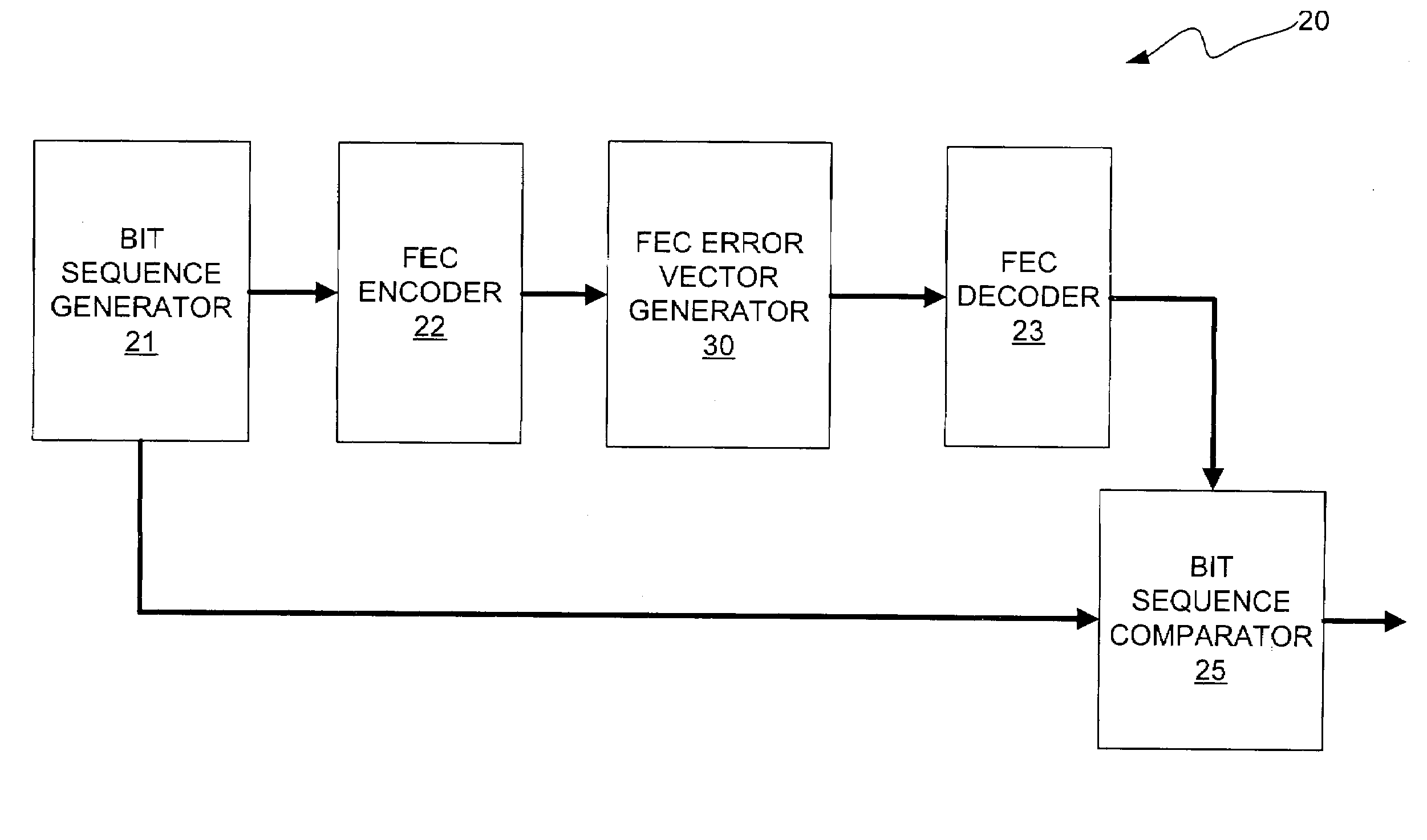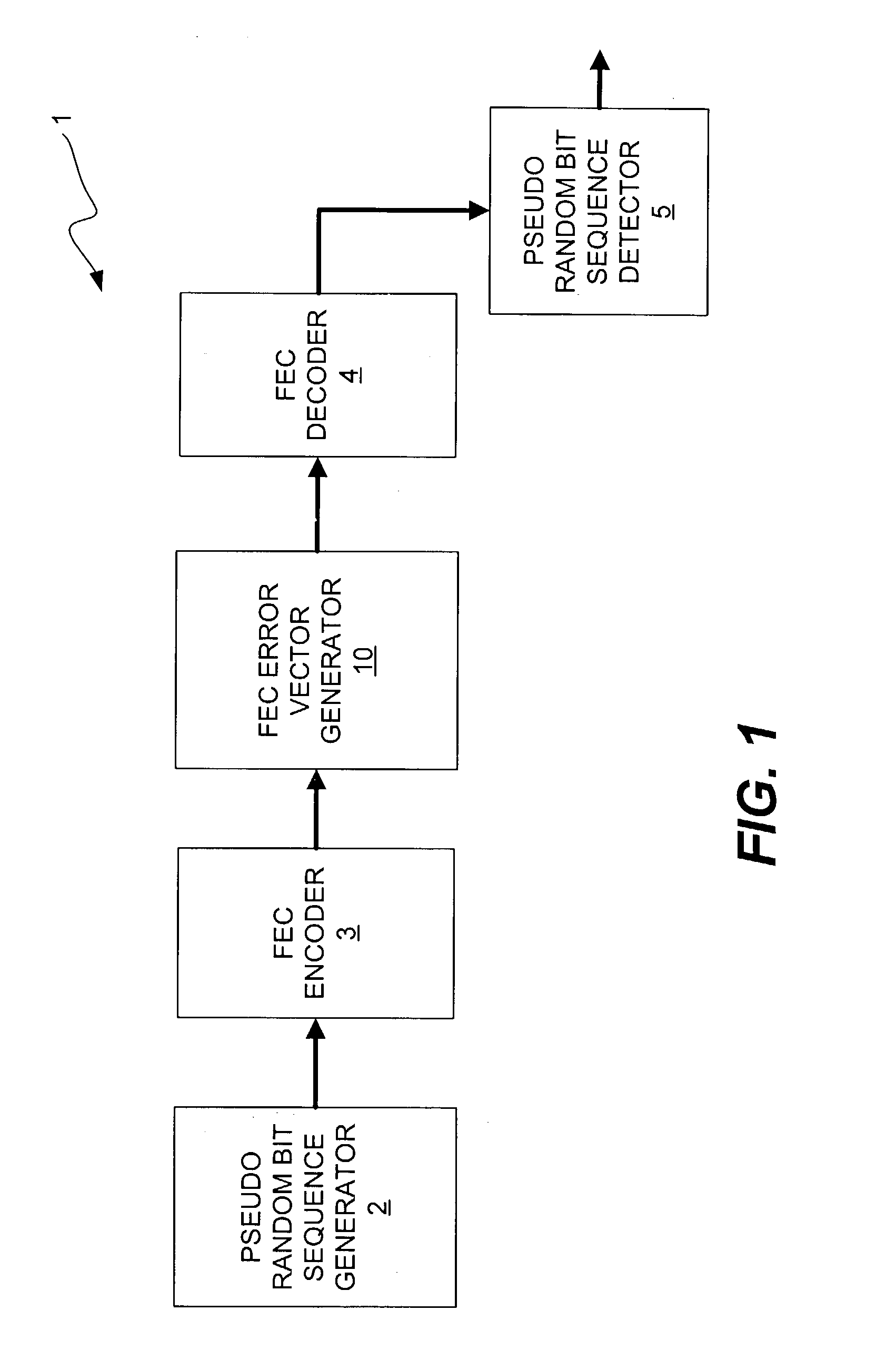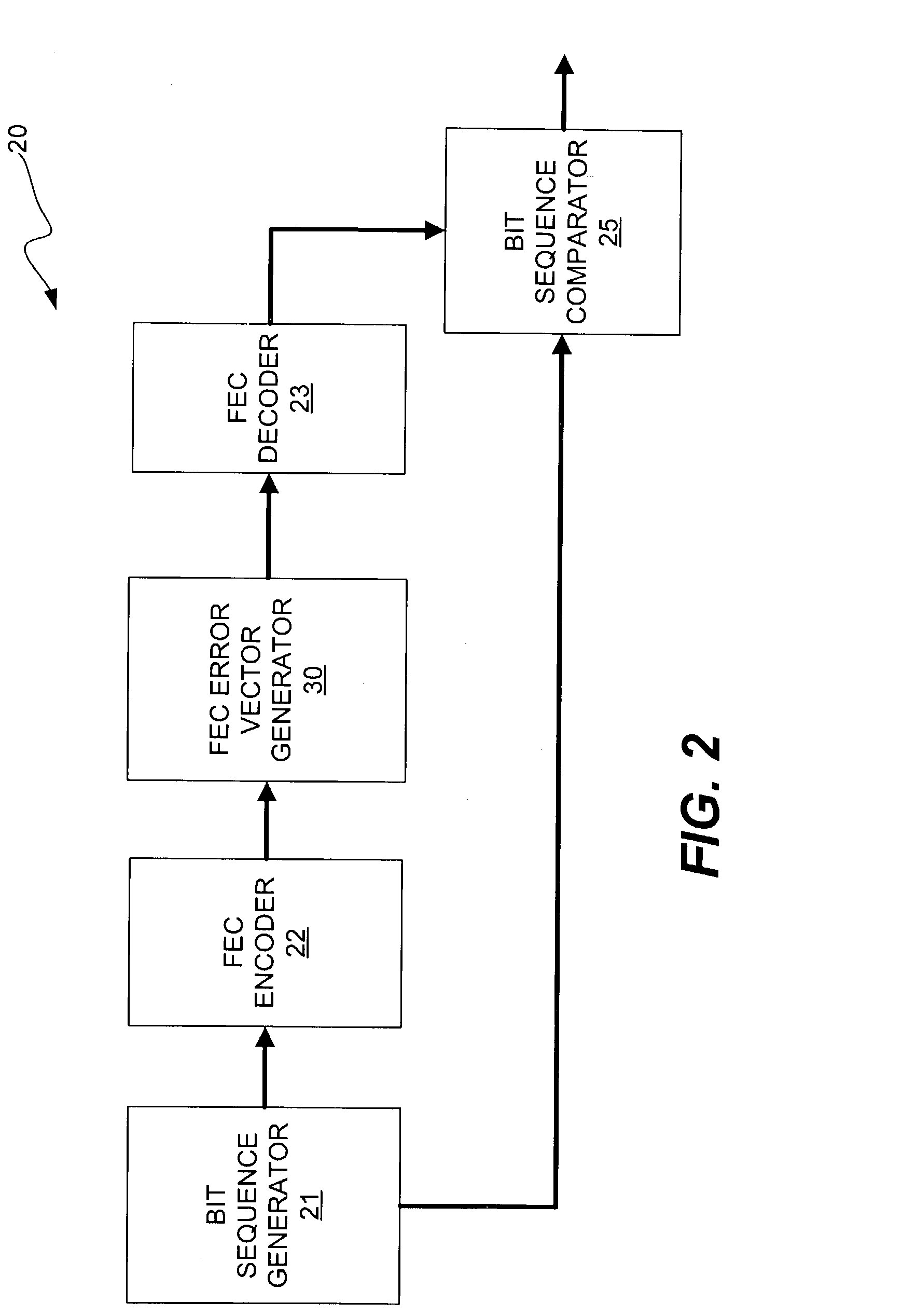Method and apparatus for generating bit errors in a forward error correction (FEC) system to estimate power dissipation characteristics of the system
a technology of forward error correction and bit errors, applied in the field of communication, can solve problems such as corruption of bits that describe information being transmitted, bandwidth utilization of retransmitting data, and inability to accurately produce test vectors, so as to estimate power dissipation
- Summary
- Abstract
- Description
- Claims
- Application Information
AI Technical Summary
Benefits of technology
Problems solved by technology
Method used
Image
Examples
Embodiment Construction
[0016]In accordance with the present invention, it has been determined that a burst error generator that is capable of erroring the maximum number of correctable data bits in every FEC encoded frame, will allow the designer to accurately produce test vectors that are suitable for use in commercially available power estimation tools. In addition, after the IC is produced, the burst error generator of the present invention can be enabled to provide real-time FEC power dissipation data for use in system thermal modeling, thus obviating the need to use costly external devices that emulate a given error rate. Furthermore, the power dissipation data obtained in real-time may be used to refine the initial design power estimate, which will then allow the designer to develop a more accurate prediction of power consumption for future IC designs. Thus, the burst error generator of the present invention is capable of reducing iterations of IC designs by accurately estimating the worst-case powe...
PUM
 Login to View More
Login to View More Abstract
Description
Claims
Application Information
 Login to View More
Login to View More - R&D
- Intellectual Property
- Life Sciences
- Materials
- Tech Scout
- Unparalleled Data Quality
- Higher Quality Content
- 60% Fewer Hallucinations
Browse by: Latest US Patents, China's latest patents, Technical Efficacy Thesaurus, Application Domain, Technology Topic, Popular Technical Reports.
© 2025 PatSnap. All rights reserved.Legal|Privacy policy|Modern Slavery Act Transparency Statement|Sitemap|About US| Contact US: help@patsnap.com



